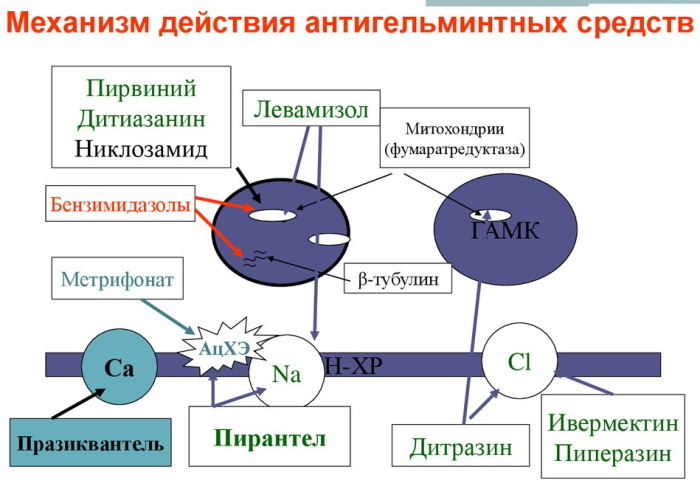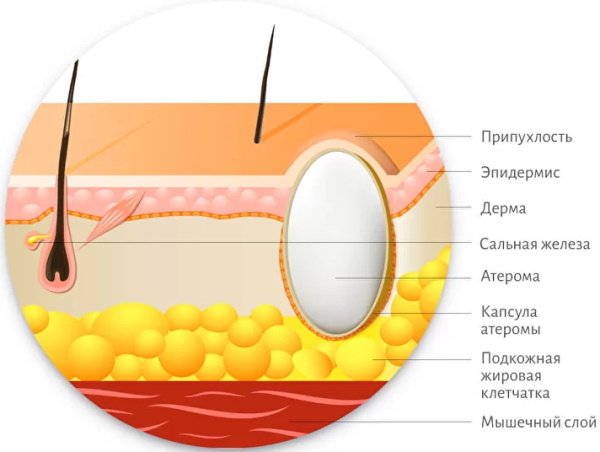Content
- Views
- Catarrhal sphenoiditis
- Exudative sphenoiditis
- Purulent sphenoiditis
- Polypoid sphenoiditis
- Stages and degrees
- Mild severity
- Moderate severity
- Severe degree
- Symptoms and Signs
- Causes
- Diagnostics
- Treatment methods
- Antibacterial agents
- Erythromycin
- Clarithromycin
- Ceftriaxone
- Vasoconstrictor drugs
- Endoscopic surgery
- Possible consequences and complications
- Video about sphenoiditis
Sphenoiditis is a dangerous disease of inflammatory etiology that is localized in the upper respiratory tract. There is a mucous membrane in the affected area the sphenoid sinus, which performs the airway function. In the early stages of development, sphenoiditis manifests itself with symptoms that are typical of the common cold, influenza virus or ARVI.
As the disease progresses, other pathological signs associated with attacks of severe headache, accumulation of serous exudate in the sphenoid sinus are added. This disease occurs periodically in children and adult patients who suffer from chronic rhinitis, neglect the treatment of acute respiratory viral infections.
Views
Sphenodite is classified based on symptoms and the severity of inflammation within the sphenoid sinus in an adult or child. The type of this disease is established after a comprehensive examination of the patient's upper respiratory tract, including the diagnosis of his paranasal sinuses. Based on the information received, treatment tactics are selected.
Catarrhal sphenoiditis
This type of sphenoiditis is the initial stage of the pathological process. The catarrhal type of the disease is characterized by pronounced edema of the mucous membrane of the sphenoid sinus. The patient has practically no accompanying symptoms that may indicate the development of sphenoiditis.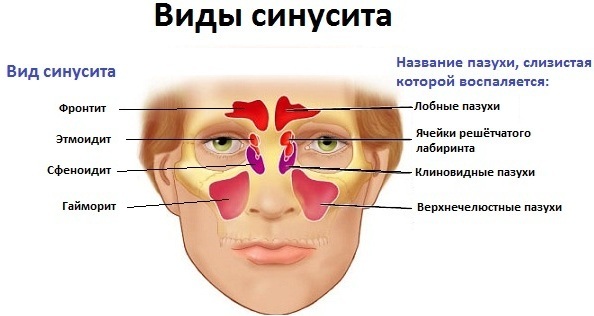
In most cases, the catarrhal form of the disease goes unnoticed. It is possible to diagnose the initial stage of inflammation of the sinus mucosa during its preventive examination. For example, if a person is initially prone to infectious diseases of the upper respiratory tract, or has previously undergone a course of complex treatment for a severe form of sphenoiditis.
Exudative sphenoiditis
This type of disease is the next stage in the development of inflammation in the sphenoid sinus, which does not receive adequate therapy. This type of sphenoiditis is characterized by a progressive lesion of the mucous membrane with a gradual accumulation of serous exudate. Inside the sphenoid sinus, purulent contents or ichor begins to accumulate, depending on the causes of the onset of the disease.
Purulent sphenoiditis
The presence of exclusively purulent sphenoiditis, which occurs from the first days of the inflammatory process, indicates infection of the sphenoid sinus with a bacterial infection. This type of disease is characterized by acute symptoms, the rapid spread of pathogenic microorganisms into neighboring tissues.
In most cases, the causative agent of purulent sphenoiditis is Staphylococcus aureus or streptococcal infection. This type of pathology is dangerous because bacterial microorganisms can spread to the outer shell of the brain, causing severe complications.
Polypoid sphenoiditis
A distinctive feature of polyposis sphenoiditis is that inflammation of the mucous membrane of the sphenoid sinus occurs as a result of its pathological growth. On the basis of healthy epithelial tissues, a plurality of small benign neoplasms are formed. Polypoid sphenoiditis is characterized by sluggish chronic inflammation without signs of exacerbation.
At the site of localization, sphenoiditis is divided into bilateral, right- or left-sided, depending on which sphenoid sinus is in the area of the inflammatory lesion.
Stages and degrees
Sphenoiditis symptoms and (treatment in adults takes place on an outpatient basis or in an otolaryngological hospital department) signs of the disease can be hidden if a person is sick with a chronic form of inflammatory process.  The disease is classified into mild, moderate, and severe.
The disease is classified into mild, moderate, and severe.
Mild severity
The initial stage of inflammation of the sphenoid sinus mucosa is characterized by mild severity. An adult feels a little discomfort in this part of the skull, signs of nasal congestion may appear. During the examination of the sphenoid sinus by an otolaryngologist, the presence of edema of its mucous membrane with a change in color from pink to saturated red is established.
Moderate severity
Sphenoiditis of moderate severity is manifested by more intense symptoms. The patient is diagnosed with the classic signs of progressive inflammation of the sphenoid sinus. At this stage, the disease can pass into the stage of chronicity, or it acquires an even more acute form of its manifestation. Further development of sphenoiditis depends on the reasons that provoked it, the state of the human immune system, the quality of his diet and lifestyle.
Severe degree
This disease, which is severe, is always accompanied by dangerous symptoms in the form of filling a wedge-shaped sinuses with purulent exudate, spread of the infectious and inflammatory process to adjacent tissues of the upper respiratory organs ways. At risk are adults with a weakened body, suffering from immunodeficiency states, allergic rhinitis.
Symptoms and Signs
Sphenoiditis symptoms and (treatment in adults is prescribed by an otolaryngologist) other clinical manifestations of the disease are determined by the doctor during the preliminary examination of the patient.
The following signs of this disease are distinguished:
- attacks of aching headache in the back of the head, moving towards the eyeballs and the bridge of the nose (this symptom cannot be stopped even after taking painkillers);
- a feeling of discomfort in the depths of the nose;
- mucous, as well as purulent discharge that flows down the back of the pharynx;
- deterioration in the quality of vision (some patients complain of double vision, decreased visual acuity, periodic blurring of environmental objects);
- dizziness;
- general physical weakness, malaise, and fatigue;
- complete or partial loss of smell;
- purulent or bloody discharge from the nasal passages;
- an increase in body temperature to subfebrile values in the range of 37.0-37.5 degrees;
- decreased appetite;
- a feeling of an unpleasant odor in the nose (a similar symptom indicates a possible accumulation of purulent exudate inside the sphenoid sinus);
- shallow and restless sleep.
External signs of sphenoiditis can be confused with the manifestation of other diseases of the body. Only a hardware examination of the sphenoid sinus allows the otolaryngologist to make an accurate diagnosis.
Causes
Sphenoiditis symptoms and (treatment in adults is carried out with the use of anti-inflammatory drugs) the clinical picture of this disease appears gradually. In most cases, the main cause of the development of inflammatory lesions of the sphenoid sinus is its infection with bacterial, viral or fungal microflora.
The emergence of sphenoiditis is facilitated by the influence of the following factors:
- too narrow outlet from the sphenoid sinus;
- polyposis or other neoplasms of a benign or oncological nature of origin;
- severe curvature of the nasal septum with its pronounced deformation in the posterior and upper section;
- blockage of the anastomosis of the sphenoid sinus with a foreign object, cyst or other epithelial growth;
- congenital absence of an outlet;
- additional septa inside the sphenoid sinus;
- previous trauma to the skull;
- abnormally large or too small volume of the sphenoid sinus.
In medical practice, there are occasional cases when patients with a very wide anastomosis in while a sharp breath through the nose, foreign objects of small sizes. This led to the development of chronic inflammation of this part of the skull.
Diagnostics
Sphenoiditis symptoms and (treatment in adults is carried out in a comprehensive manner) the signs of this disease depend from a strain of an infectious pathogen that caused inflammation of the mucous membrane of the sphenoid sinus. The table below describes in detail the main diagnostic methods that allow you to detect a pathological process in the paranasal sinus of this type.
| Inspection method | Description of the diagnostic process |
| Preliminary inspection | At the initial stage of diagnosis, the patient is examined by an otolaryngologist. The doctor of this specialization listens to the patient's complaints, enters the relevant information into his medical documentation. Based on the clinical picture, which was established during the preliminary examination, a decision is made on the use of hardware diagnostic methods. The average cost of an initial consultation with an otolaryngologist in a private clinic is from 1950 rubles. In a public hospital, patients with signs of sphenoiditis are examined free of charge. |
| Rhinoscopy | Rhinoscopy is an instrumental examination of the nasal cavity. The otolaryngologist uses a special viewing mirror, which looks like a metal funnel. This instrument allows you to maximize the expansion of the nasal canals for a visual examination of their internal structure and paranasal sinuses. This diagnostic procedure does not require any special training from the patient. If necessary, the otolaryngologist performs an independent cleaning of the patient's nasal canals from mucous and purulent discharge. Rhinoscopy is a painless examination and may cause only minor discomfort. The average duration of diagnostics is 10-15 minutes, and its cost is in the range of 350-500 rubles. |
| X-ray | X-ray of the sphenoid sinus is considered one of the most informative methods for diagnosing sphenoiditis. A snapshot of this part of the skull is performed within 5-10 minutes, and does not require special preparation. To obtain more objective data on the state of the mucous membrane of the sphenoid sinus of the patient, a contrast agent can be injected into its cavity. The X-ray image shows the areas of tissue affected by the inflammatory process, and also the space filled with serous exudate is visible. The average cost of X-ray of the sphenoid sinus in 2 projections is 1200 rubles. |
| CT or MRI | These types of diagnostics are also informative methods for obtaining comprehensive information about the presence or absence of an inflammatory process inside the sphenoid sinus. All information about a given area of the skull is displayed in digital format on a computer monitor. The diagnostic process is recorded. This examination method is absolutely painless, it is carried out within 20-45 minutes. with further interpretation by a specialist. The average cost of CT and MRI of the sphenoid sinus is 3400 rubles. |
| Microbiological examination | Microbiological analysis of mucous and purulent contents that are secreted from the nasal the patient's canals, and also flows down the back wall of his larynx, is an important stage in the overall diagnostics. In the process of performing this study, the strain of the infectious microflora is determined, which provokes acute or chronic inflammation of the sphenoid sinus. For this analysis, a swab is taken from the nasal passages and the mucous membrane of the throat. The research results are known after 1-3 days. Based on the data obtained, the otolaryngologist selects antibacterial drugs, the constituent components of which are effective against microorganisms of specific strains. The average cost of this diagnostic method is 1,370 rubles. |
All patients with signs of sphenoiditis undergo a hardware examination, blood and urine tests to determine the general condition of the body. Depending on the causes of the disease, additional consultation with a neurologist, ophthalmologist or traumatologist may be required. Upon completion of the diagnosis, the doctor selects an adequate treatment regimen for the patient.
Treatment methods
Sphenoiditis symptoms and (treatment in adults begins after rhinoscopy of the paranasal sinuses) the external signs of this disease can be detected independently, while at home. Therapy of the inflammatory process inside the sphenoid sinus includes the use of drugs with antibacterial, vasoconstrictor and anti-inflammatory properties.
A radical method of treatment is endoscopic penetration into the sphenoid sinus with the formation of a drainage hole to remove purulent or serous exudate.
Antibacterial agents
The use of antibiotics makes it possible to localize the infectious and inflammatory process in the first days of the development of sphenoiditis. The selection of drugs in this category is carried out based on the results microbiological examination of mucous and purulent contents that are secreted from the nasal patient channels.
Erythromycin
Broad-spectrum antibiotic Erythromycin belongs to the pharmacological group of macrolides. This medication comes in the form of white tablets covered with a protective film. The active substance of this medication is erythromycin at a dosage of 100, 250 and 500 mg. A single dose of this drug for adults is 250 to 500 mg per day.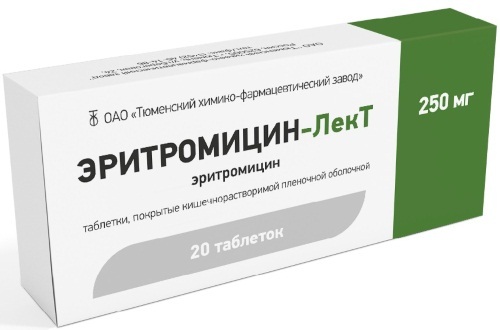
The interval between doses of Erythromycin is at least 6 hours. The maximum daily dose of this medication is from 1 to 2 g. The duration of the therapeutic course is at least 10 days. The average cost of Erythromycin is within 51 rubles. for 10 tab.
Clarithromycin
The bacteriostatic drug Clarithromycin is effective against gram-positive and gram-negative microorganisms. This medication is available in the form of capsules with a dosage of 250 and 500 mg. The active substance of the drug is the synthetic compound clarithromycin.
This remedy is prescribed to be taken at 250 mg 2 times a day. In case of emergency, a single dose is increased to 500 mg. The duration of the therapeutic course is from 6 to 14 days. The average cost of the antibiotic Clarithromycin is from 108 rubles. for 14 capsules.
Ceftriaxone
Semi-synthetic antibiotic belonging to the category of 3rd generation cephalosporins. The therapeutic effectiveness of this medication is ensured by suppressing the physiological process of transformation of the cell membranes of bacterial microorganisms.
Ceftriaxone is available in the form of a white powder for the preparation of intramuscular and intravenous injection solutions. The dosage regimen for adult patients with acute or chronic sphenoiditis is from 1 to 2 g of this drug per day.
In especially severe cases, when there is a risk of the spread of the inflammatory process to the lining of the brain, the daily dose of Ceftriaxone is increased to 4 g. The duration of the therapeutic course is determined individually, but on average it lasts from 7 to 10 days.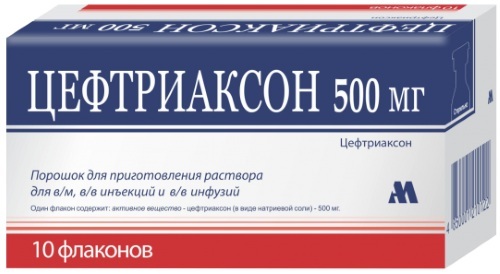
The average cost of the antibiotic Ceftriaxone is 20 rubles. for 1 g of powder. The preparation of intravenous or intramuscular injection is carried out by a medical professional immediately before the introduction of the medication into the patient's body.
Vasoconstrictor drugs
To improve the outflow of mucous and purulent contents that accumulate in the sphenoid sinus under the influence of the inflammatory process, use vasoconstrictor drugs of the following types:
- Naphtizin (17 rubles. per bottle 10 ml);
- Lazorin (within 550 rubles. for a bottle of 10 ml);
- Equasolin (from 114 rubles. for 10 ml);
- Otrivin (about 136 rubles. per bottle 10 ml);
- Knoxprey (from 132 to 158 rubles. per bottle of 20 ml).
The above drops and sprays are introduced into the cavity of the nasal canals 1-2 times a day. Medicines of this category facilitate the general well-being of the patient, restore nasal breathing. Vasoconstrictor drugs are indicated for use in combination therapy with antibacterial drugs.
Endoscopic surgery
Endoscopic surgery is indicated for patients with chronic and acute sphenoiditis, the development of which is accompanied by the accumulation of purulent contents inside the sphenoid sinus. Surgical intervention is performed under local anesthesia or general anesthesia, depending on the clinical case.
This method of treatment is carried out by an otolaryngologist, observing the following algorithm of actions:
- Anesthetizes the surgical field.
- Expands the patient's nasal passages.
- An endoscope and surgical instruments are introduced into the cavity of the patient's nasal openings.
- Expands the anastomosis of the sphenoid sinus.
- Organizes the outflow of serous exudate.

The average duration of endoscopic surgery for sphenoiditis is 15 minutes. Over the next 1-2 days, the patient is in the hospital of the otolaryngology department, where he receives care for the nasal canals. To prevent recurrence of the disease, the patient is prescribed a course of antibiotic therapy.
Possible consequences and complications
Lack of treatment for sphenoiditis is fraught with the development of the following complications and negative consequences for the patient's body:
- inflammatory lesion of peripheral nerves passing in the cranial region;
- bacterial infection of the eye sockets;
- complete or partial loss of vision;
- the spread of bacterial microorganisms in the cavities of other paranasal sinuses;
- the ingress of purulent contents into the cranial cavity with the development of extensive inflammation of the cerebral cortex.
The above complications of sphenoiditis can cause disability of the patient, and can also cause death.
Sphenoiditis is a dangerous disease of an infectious and inflammatory nature of origin, which is characterized by damage to the mucous membrane of the sphenoid sinus. The main causes of this ailment are skull injuries, untreated upper respiratory tract diseases, severely weakened immunity and allergic rhinitis.
Symptoms of sphenoiditis are manifested by headache, severe discomfort in the depths of the nose, and the release of serous exudate. This disease is equally common in adults and children. Treatment of sphenoiditis involves taking antibacterial drugs, vasoconstrictor drops. Removal of purulent exudate from the sphenoid sinus cavity is performed using endoscopic surgery.
Video about sphenoiditis
Sphenoiditis treatment:

